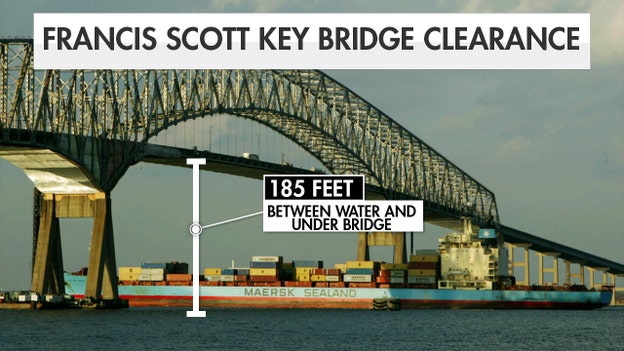What is dirty fuel? Investigators examine if contaminated fuel was factor in cargo ship failure
Safety investigators probing the Francis Scott Key Bridge collapse in Baltimore, Maryland, are examining whether contaminated fuel was a factor in the cargo ship losing power and ramming the bridge.
Andrew Lipow, president of consulting firm Lipow Oil Associates, LLC, told Fox News there are two types of fuel that vessels burn and explained where so-called "dirty fuel" comes from.
"Marine distillate fuels, also known as Marine Gas Oil, is used in diesel engines. Then there is Marine Residual Fuels which can be used in the main engines. Some renewable fuels, such as biodiesel or renewable diesel have recently been used in the diesel engines," Lipow explained.
Dirty diesel fuel is a fuel that may be contaminated with water or sediment picked up during the refining process coming in with crude oil, or from the catalyst used in some other refining processes, according to Lipow.
"You might think, how could refiners let this happen? They wash the crude with water to remove the sediment. The diesel fuel must be boiled out of the crude oil and rarely contains any solid material after this step has taken place. Sediment can accumulate in the distribution system in tank bottoms or even barges and ultimately be loaded onto a vessel," he said. "This could be a possible source of contamination. The industry does have quality specifications regarding the sediment content."
If dirty fuel caused the power outage on the cargo ship Dali, the more likely culprit would be dirty residual fuel, Lipow explained.
"Residual fuel oil is produced from the heaviest part of the crude oil, the 'bottom of the barrel.' Other heavy oil streams are produced at some of the downstream units which are blended into residual fuel and these streams may contain catalyst particulates," he said.
"These 'bottom of the barrel' heavy oil streams may be sourced from several refiners and blended to produce the Marine Residual Fuel. In some cases, they may be incompatible with each other meaning that upon blending, solids will form and that plugs up the fuel injectors starving the engine of fuel," he continued. "No fuel: no power."
Lipow said sediment can gather in the distribution system in tank bottoms or even barges and ultimately be loaded onto a vessel.
"The very nature of residual fuels being heavy is more likely to lead to this being a potential source of 'dirty fuel,'" he said.

No comments: